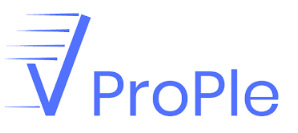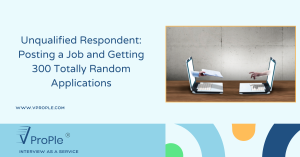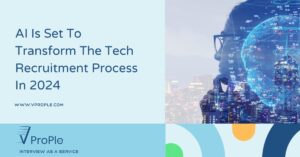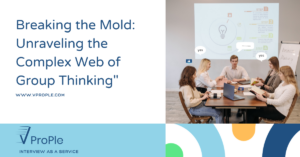This website use cookies to help you have a superior and more relevant browsing experience on the website.
Categories: Uncategorized
How to Build your Internal Hiring Brand when you Outsource Interviews?
How to Build your Internal Hiring Brand: Discover the risks of interview outsourcing and how the right strategies can strengthen candidate experience, brand trust, and hiring outcomes.
read moreHow to Turn ‘Tell Me About Yourself’ into Your Strongest Interview Moment
Tell me about yourself: A question that sounds simple but reveals everything. How to balance professionalism with personality and make your response stand out.
read moreUnqualified Respondent: Posting a Job and Getting 300 Totally Random Applications
Facing a flood of unqualified respondents on every job post? Discover why it happens and how to filter noise into real, quality candidates.
read moreBest Practices for Virtual Interviews: Building Human Connection Digitally
Virtual interviews are here to stay—but building real human connection online takes effort. With Interview as a Service, you ensure structure, empathy, and trust all in one frame.
read moreVirtual Interviews vs. Traditional Interviews
The job market today is quite fast-paced. After the pandemic, the evaluation of candidates in job interviews has two approaches- traditional interviews and virtual interviews. While both approaches have their benefits, companies nowadays are mostly seen shifting their process to a virtual one. When we talk about the traditional approach, it is the process of […]
read moreWhy it is time for Interview Management System
In the year 2024, there has been a tremendous shift in hiring management, and it is becoming very crucial for companies to formulate a robust Interview Management System to streamline the hiring process and effective evaluation of the candidate. Online interview service platforms have become an extremely integral part of the hiring process, as they […]
read moreHR Trends In 2026 That’ll Change The Job Market
The work landscape is on the brink of significant shifts in 2026, influenced by economic dynamics, the rise of new technologies, and the ever-changing priorities of the modern workplace. In 2026, the Indian job market is anticipated to maintain its upward momentum, with forecasts pointing towards ongoing expansions in hiring. Fueled by rapid industry growth […]
read moreAI Is Set To Transform The Tech Recruitment Process In 2026
In recent times, AI has taken the world by storm and has highly impacted the job market. It is now undeniably a part of our everyday lives. While the debate continues whether or not AI will take over jobs rendering people jobless left, right, and centre, it is highly important to understand that we are […]
read moreStrategies to Enhance Candidate Experience for Recruitment Success
The brand value of your company is unquestionably influenced by the current employees and the employees that you are going to hire. There are multiple stages and touch points in the hiring process and this candidate’s experience. This pertains to the calibre of interactions a candidate undergoes from the initial job description and employer branding […]
read moreBreaking the Mold: Unraveling the Complex Web of Group Thinking
In a world where people often work together and exchange ideas, group thinking is pretty common. It means that when a bunch of people collaborate, they can come up with cool ideas and feel more connected. However, there’s a downside too. Group thinking can sometimes stop individual creativity and careful thinking. In this blog post, […]
read more









